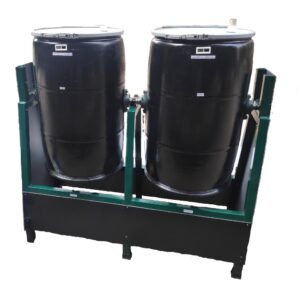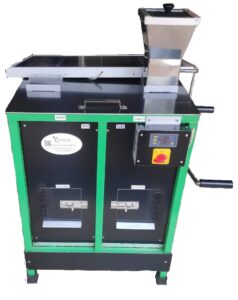Top 5 Composting techniques which is easy to convert wet waste into useful compost.

There are so many Composting techniques available in market, people are confusing or consider waste to compost is very difficult task, so it is not Easy way, but today in this post I am going to tell you top 5 Composting techniques that we can do compost with easy way and it will be simple or sustainable solutions.
before to know more about composting you should know some basic of Composting, why should we do Compost, Why composting is important things now, Generally there are lot of Benefits of Composting , also here we can reduce waste generated and helps to environment by doing composting. following are top 5 Composting techniques which is most effective and peoples are using these techniques and methods
Top 5 composting techniques…
- Compost Pit/ bin
- In vessel Composting.
- Trench Composting
- Vermi-Composting
- Solar Composting.
Compost Pit/ bin:

compost pit is one of the composting techniques which is same as trench method, there are two methodes of compost pit you can make one block or one enclosed square type bin and add crushed waste into bin or compost pit , some carbon source will required for compost pit , after crushing waste add carbon source into crushed waste and make compost , it will take more time for composting but it gives best quality compost. and second method is Compost pits are one of the simplest methods of composting organic material for the garden, but they are labor intensive to set up. Once you select a site for your pit, you will need to dig the pit and then add the compost material, such as fruit and vegetable scraps and grass clippings. Once you fill the pit with compostable material, it requires minimal maintenance while the material decomposes into usable organic material for your garden and yard.
In vessel Composting.

in vessel composting techniques means composting can be done in vessel or bin, people may use Compost tumbler or Compost bin , it is enclosed with foam or high polyethylene. Compost Tumbler is one of the best example of in vessel Composting, in vessel composting it is easy for mixing or turning , you can do natural compost by this methode.
In-vessel composting generally describes a group of methods that confine the composting materials within a building, container, or vessel, In-vessel composting systems can consist of metal or plastic tanks or concrete bunkers in which air flow and temperature can be controlled, using the principles of a “bioreactor“. Generally the air circulation is metered in via buried tubes that allow fresh air to be injected under pressure, with the exhaust being extracted through a biofilter, with temperature and moisture conditions monitored using probes in the mass to allow maintenance of optimum aerobic decomposition conditions.
This technique is generally used for municipal scale organic waste processing, including final treatment of sewage biosolids, to a safe stable state for reclamation as a soil amendment. In-vessel composting can also refer to aerated static pile composting with the addition of removable covers that enclose the piles, as with the system in extensive use by farmer groups in Thailand, supported by the National Science and Technology Development Agency there.
Offensive odors are caused by putrefaction (anaerobic decomposition) of nitrogenous animal and vegetable matter gassing off as ammonia. This is controlled with a higher carbon to nitrogen ratio, or increased aeration by ventilation, and use of a coarser grade of carbon material to allow better air circulation. Prevention and capture of any gases naturally occurring (volatile organic compounds) during the hot aerobic composting involved is the objective of the biofilter, and as the filtering material saturates over time, it can be used in the composting process and replaced with fresh material.
A more advanced systems design is able to limit the odor issues considerably, and it is also able to raise the total energy and resource output by integrating in-vessel composting with anaerobic digestion. Through anaerobic decomposition it is also possible to reduce pathogen levels similarly to that of traditional aerated composting when the anaerobic bioreactors operate at thermophilic temperatures, between 41 and 122 °C (106 and 252 °F).
Trench composting:

Trench composting techniques is old method and which is effective method of composting, it is simple method and good idea to dispose wet waste that attract rodents such as meat, dairy, bread and cooked foods etc, also it is best way to dispose pet waste.
You dig a trench or any shape hole approximately 1 feet deep in an open space of your garden, add roughly four to six inches of compostable materials, such as kitchen scraps, spent garden plants, small prunings, thinnings, and weeds, and bury them with the soil you dug out of the trench or hole. burying your kitchen scraps directly into the soil, right in the garden. Dig a hole roughly 12 inches deep and wide enough to bury whatever scraps you have collected, dump in 4-6 inches of compostable material, and cover it back up with dirt.
Vermi-composting:

As a farmer’s friend, we have been learning since childhood about Earthworms and useful information about manure. some people cultivate a hobby of making compost while others learn about this fertilizer to increase the fertility of their land, today I am going to give you information about such Vermicomposting. It takes time for us to do our best to maintain the fertility of the soil. Currently we see that the soil fertility or its level has gone down by chemical treatment, we have learned about many technologies to make compost from wet waste, Earthworm manure is also a technology that we convert wet waste into compost, we use Earthworm to convert wet waste into compost. Uses. We say that Earthworm are the friend of the farmers as they help the farmers to increase their yield by increasing the fertility of the soil by producing proper fertilizer from the waste. at present, the government or the government forces the farmers to grow crops using chemical elements to relieve them, but as a result, the soil becomes accustomed to the chemical elements and the land becomes barren and it becomes very difficult to grow crops and this has adverse effects on the environment. The fertility of the soil is declining day by day. As a result, the cost of production has gone up drastically and as we see farmers going into debt, it is very important to increase the fertility of the land. You can increase soil fertility by using Vermicompost.
Solar Composting:
Solar compost machine:

Basically the solar compost machine works on heat, mix, vent technology and carbon source.
The machine is divided into two parts, use the daily waste to fill the first part, it may take you 5 to 6 days, when the first part is full, you can use it to fill the second part, when the second part is full, you have to prepare compost in the first part. Yes, you can use this compost for the garden.
Solar powered composters are the best waste disposal manager in India, heating can be done with natural sunlight that maintains a temperature of 50 degrees Celsius, in the rainy season you have to add more carbon source to speed up composting, for mixing, you have to rotate crank Handel manually once in a day, for rotating cranking handle, here provided high branded stainless steel shaft with gear mechanism for operation. machine will not stop working under maintenance, Composting has a ventilation process to prevent odors, Composting can be made easier and faster due to ventilation. Carbon source is the main key or heart of composting, you need to add some carbon source to composting to increase the speed. carbon source is basically a material made of branch such as sawdust, coat-peat, grass, dry leaves etc.
Solar is a free energy source we use to save and consume our electricity costs and to dispose of waste.
With the help of solar energy we can convert our daily waste into compost in less time.
The method is simple and yet effective. Garbage is first divided into wet waste and dry waste.
Wet waste was collected and divided into small particles to catalyze composting.


